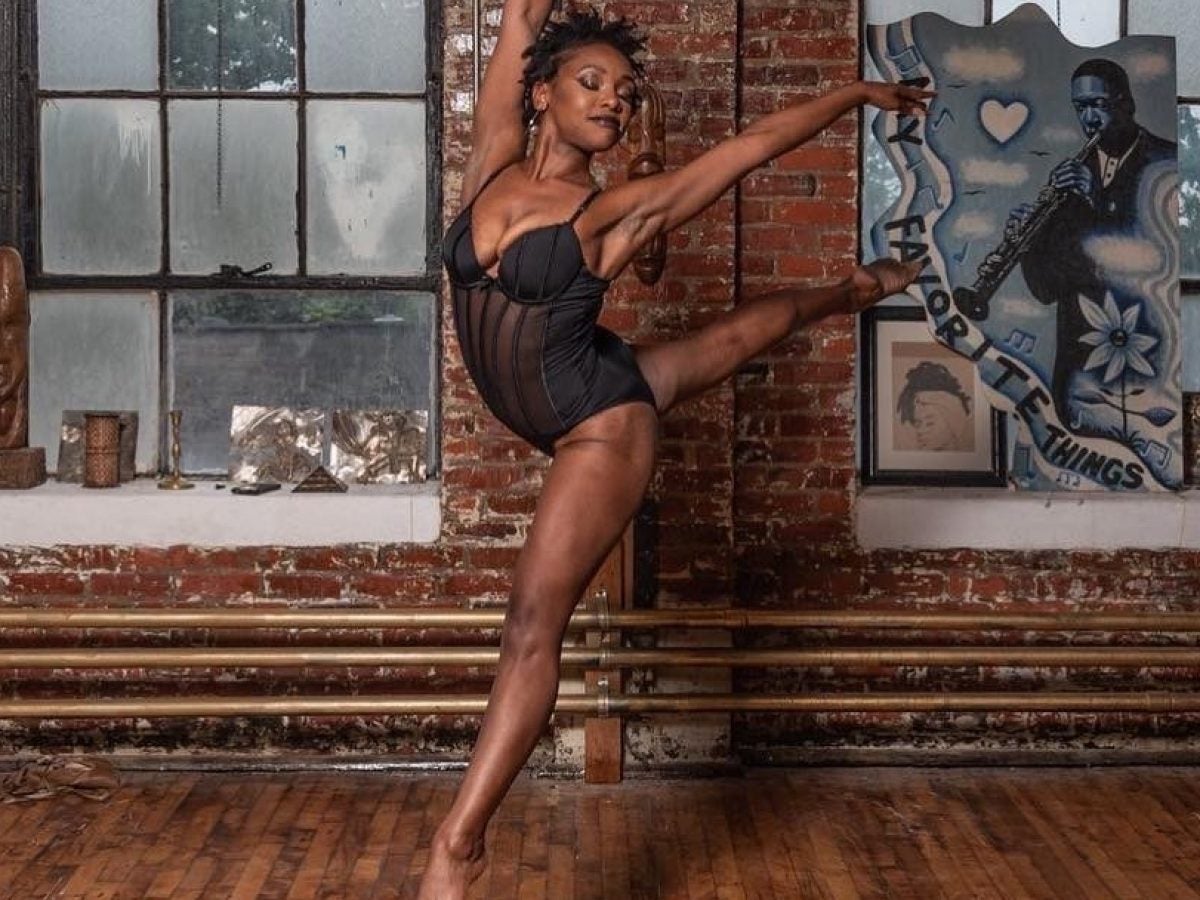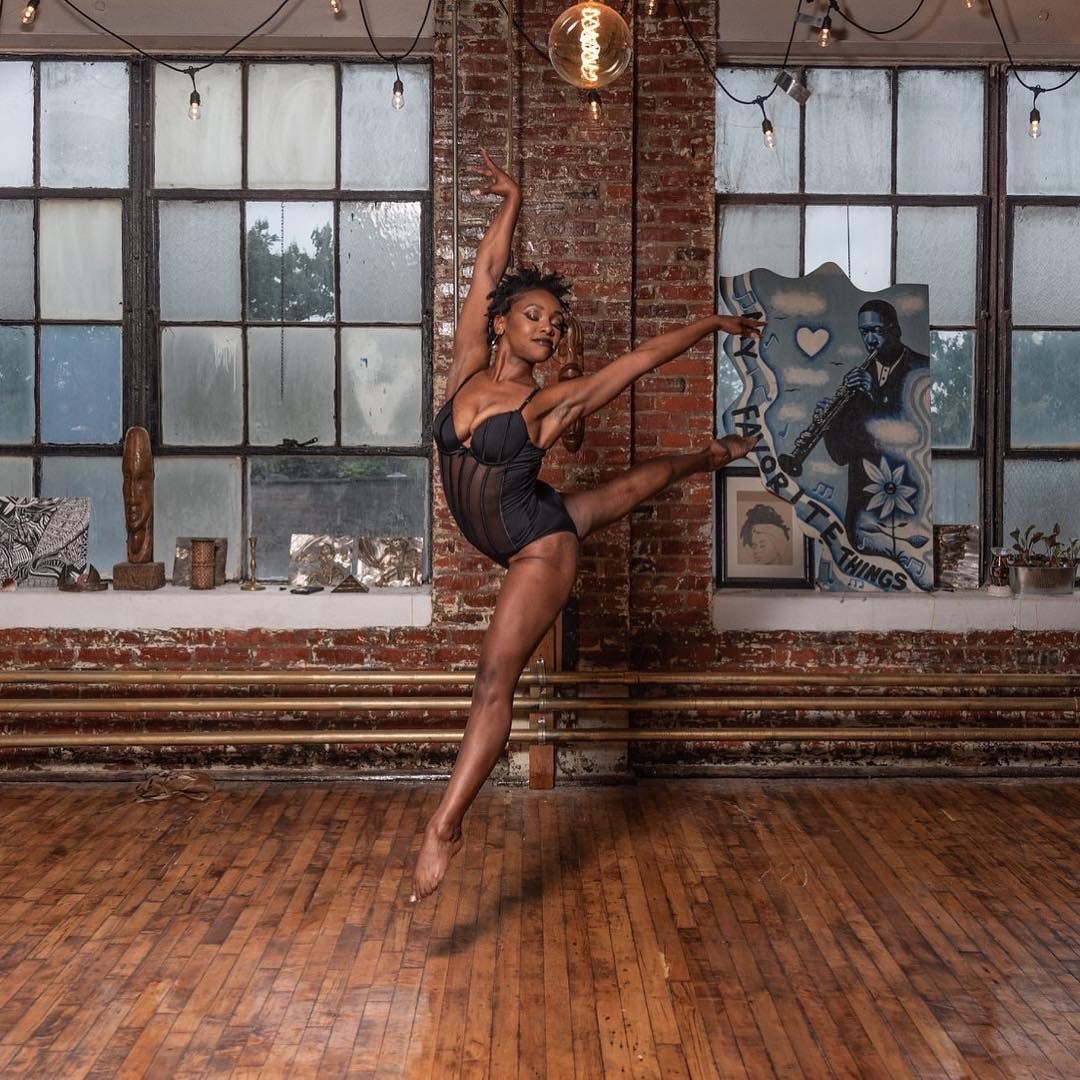
When she started dancing at the age of three, this classically trained ballerina had no idea that she would be changing the world with a recreational weekend activity that would later turn into purpose. Coming from a single-parent household, her mother enrolled her in dance classes while she worked in order to give her and her brother something to do. She began to take dance more seriously the more she stuck to it and eventually started pre-professional training, which led her to workshops, intensives and training opportunities across a multitude of studios, institutions and academies.
She admitted that she once wanted to be a children’s book author, but her passion and purpose as a ballet dancer had other plans for her future. Meet Tyde-Courtney Edwards, the founder of Ballet After Dark, which is the only Black-owned business that provides trauma-informed, holistic dance therapy to survivors of sexual and intimate partner violence. “I created Ballet After Dark as a result of recognizing the lack of prevention and recovery programming provided to Black women,” Edwards shared with ESSENCE about her passion for the foundation of her organization. “It was conceptualized after trying to figure out how to heal following my own assault and recognizing that there weren’t that many spaces to go that provided the type of consistent healing that I was looking for.”
Edwards continued to explain how while it is easy to find pop-up shops and drop-in classes, there weren’t too many places that she believes provided Black women with “a sense of community,” in her opinion. Her exposure to her pre-professional dance training allowed her to bridge the gaps between kinesiology, the understanding of her own body and the benefits of implementing healing practices.
“It is very much the sematic philosophy of the program that the delicate execution of ballet helps survivors reconnect, reprocess and rebuild relationships with their bodies and intimate spaces following trauma and providing an optional performance element. Not only encourages them, the survivors, to engage with the full ballet curriculum, but it also allows for survivors to set programmatic milestones to work towards,” Edwards told ESSENCE.

Ahead, we spoke to the founding director herself about Ballet After Dark, her personal healing and mental wellness journey, and the importance of destigmatizing therapy in the Black community.
ESSENCE: What was the importance to you of tapping into holistic dance therapy for sexual assault survivors?
Tyde-Courtney Edwards: The freedom of expression is always important when it comes to healing. Survivors deserve to be presented with options that just go beyond traditional mental health resources. There are no spaces that were teaching us how to reclaim our bodies back. How am I going to learn how to share my intimate space with others? How am I going to learn how to be comfortable hugging my parents again? How am I going to be comfortable with the idea of experiencing intimacy again?
As a dancer, it is vital for us to receive corrections in our classes, and I used that as one of the driving catalysts to really get myself together. I knew that using ballet as this repurposed healing tool meant that I was going to want those corrections. What did I need to do to make sure that my instructor didn’t trigger me when placing their hands on me? What type of milestones, resources and tools can I develop to work toward allowing the space to happen? I wasn’t learning that in my regular therapy and I desperately wanted to reclaim that again. Dance has always been my number one love, my passion. Even when I stepped away from it, I never really completely left it. I just figured if this was something that was working for me, it can work for someone else too.
How has dance pulled you out of mentally dark spaces?
It’s the freedom of expression. I can say, as a survivor, I don’t always want to talk about things. I don’t want to discuss my trauma all of the time. I’m tired of telling the story, but what I can do is create a piece behind it. What I can do is string together movements that will translate its various emotions. I can tell my story to you that way; I can share myself with you that way.
It is allowing for the very necessary release of feelings, emotions, that build up as a result of survival. Guilt, shame, associated with surviving such disgusting and heinous attacks. It is an opportunity to really release it from the body. Talking is extremely helpful, especially when it comes to navigating the different emotions that have developed as a result of being traumatized, but all of that is still buried in your bones. It’s still buried in your muscles. It’s still buried in your deep tissue. The only way to release it is to get the body moving, get it flowing, and you have to dispel it from you.

How would you explain dance therapy to somebody who may not know what it is?
I would explain it as just an alternative therapeutic platform. It’s an additional way for you to understand feelings that have developed as a result of ultimately experiencing, trying to work through, and release trauma. It’s our opportunity to create spaces that allow for meeting and association of women and youth impacted by trauma to discuss instances of similar experiences and how, as a network, they are able to use dance as a restorative tool.
We provide them with a full curriculum experience here, so it’s not just about having access to a couple of dance classes. It’s about creating the overall ethos that fills you with joy. When you think about healing, dance therapy should be the thing that gets you excited about your journey into healing. It shouldn’t have that humdrum feeling of, “ugh I’m about to go to my appointment with my therapist. We’re going to talk about the same things that I’ve been discussing with them for the past three weeks, a month, or however.” This is the opportunity to really give you something to look forward to.
Through the creation of safe spaces like Ballet After Dark, survivors can realize the political character of the issues that they perceive as individual problems, and recreational, artistic and educational safe spaces like the program we facilitate, provide knowledge, inhaling possibilities and choices from an intersectional perspective. It’s the opportunity to move, to come together as a group of dancers that are fighting for something and standing for something. It really turns it into a powerful community working towards restoring the wounds of violence.

What are your hopes for the future of Ballet After Dark, and how do you see it impacting the community of dancers and survivors at-large?
Our hope is to have a chapter of Ballet After Dark in every city, in every country—where it’s needed. We’re relying on platforms like Facebook and Instagram to give us that outreach and to put us in front of the dancers, the survivors, the supporters that need the resources we provide the most. Not only are we providing the service specifically for survivors of sexual assault, but we want to grow our program to hold space for Black women impacted by various levels of trauma in violence. We want to be able to engage and embrace survivors—youth and women who are survivors of gun violence, homelessness, illness, former incarceration, stalking.
We want to hold space for everyone. Our queer-friendly program is not to be designated as “we are not a place of hate,” and I do not feel like we are impacting the community as much as we can if we are only holding space for a certain type of Black survivor. If you look at how the existing victim service organizations and agencies are already set up, it services one type of survivor particularly, and it’s only to provide a specific set of resources, when in reality, survivors are impacted mentally, physically, emotionally and spiritually. We need that one-stop shop for everyone to be able to explore various elements of their healing.
When I first started Ballet After Dark, I wasn’t as trauma-informed as I am now. I didn’t understand how triggers work and I didn’t understand that you can develop new triggers as you go through your process. All of that was foreign to me and wasn’t being explained to me either. I hated the idea of bringing these survivors together, having them disclose the trauma that brought them to Ballet After Dark and then just sending them out the door afterwards. It’s like ripping a Band-Aid off every time and I’m not taking into consideration what that means for me to receive all of that energy that comes from listening to the pain of others. Our philosophy is even though we are not advocacy, we are a direct service program, we’re going to make it so that if we don’t have the resource directly available to you, we can help you. We can help you navigate the ones that are available.